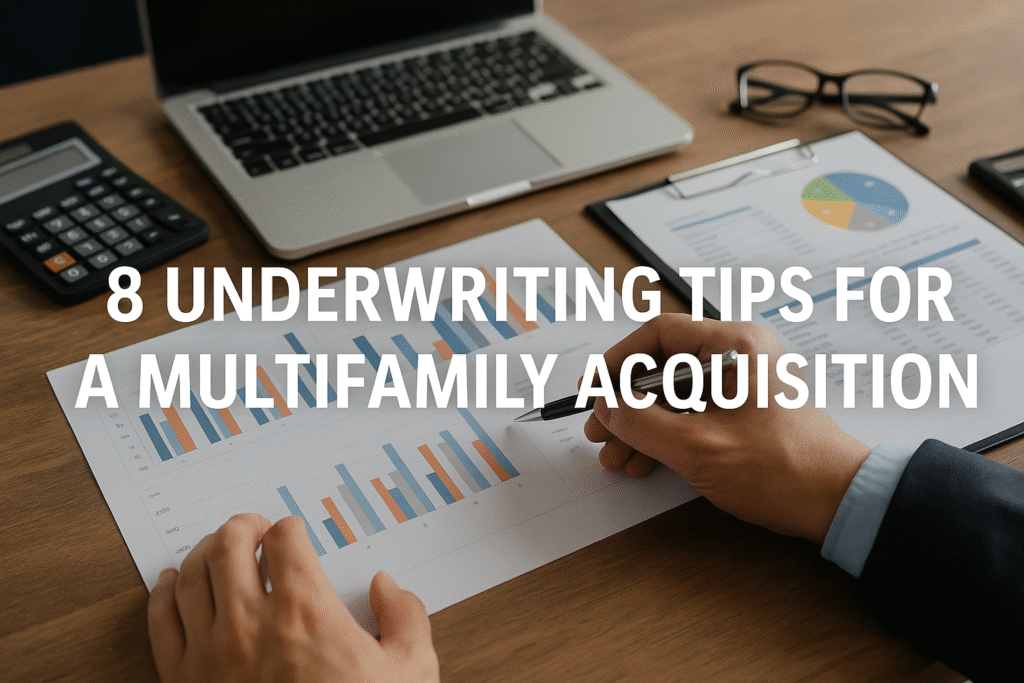How to Assess Cost Savings When Acquiring Multifamily Properties (with Real Tactics)

Looking to maximize returns on your next multifamily acquisition? Here’s where experienced operators dig deep for real cost savings—and how you can, too.
1. Scrutinize Utility Expenses and RUBS Potential
- Examine existing bills for water, sewer, trash, and electricity. Are there common area leaks or overages?
- Assess viability of implementing a Ratio Utility Billing System (RUBS) to bill back tenants for utilities. Many buyers miss this: in non-rent-controlled markets, RUBS can materially reduce owner expenses and improve NOI overnight.
2. Analyze Real Estate Taxes and Reassessment Risk
- Property taxes often jump on sale. Get current tax quotes, study local reassessment triggers, and model higher taxes at your future purchase price—not just historical rates. Appeal any discrepancies in the assessment as soon as possible for immediate savings.
3. Conduct a Cost Segregation Study
- Have a specialist break out short-life assets (appliances, certain finishes, land improvements) to accelerate depreciation. This can generate sizable year-one tax deductions, and boost after-tax cash flow, especially if paired with a 1031 exchange or bonus depreciation in current tax law.
4. Evaluate Operating Contracts
- Review every vendor contract: landscaping, maintenance, pest control, laundry. Renegotiate or rebid these after closing—outdated contracts are a common drain, and new management often gets better rates for the same service.
5. Perform Energy and Water Efficiency Assessment
- Commission an energy audit before closing. Upgrades like LED lighting, low-flow toilets, and modern HVAC can be offset with utility rebates and immediately lower year-one OpEx, supporting higher loan proceeds thanks to improved NOI.
6. Scour Insurance Costs
- Don’t assume seller’s insurance rates apply. Get new quotes—rates can vary widely on takeover based on insurer, coverage, and even new owner profiles. Bundle policies across assets or raise deductibles for lower premiums without sacrificing coverage.
7. Underwrite Renovation ROI, Not Just Costs
- For each planned upgrade, estimate rent premium specific to the submarket (use comps). Focus on quick-return items like resurfacing countertops or upgraded lighting, not just “wish-list” capital projects. Use a return-on-cost metric for disciplined decision-making.
8. Double Check Payroll and Staffing
- Properties transitioning from self-management to third-party, or vice versa, often present payroll redundancies or inefficiencies. Right-sizing staff and leveraging technology can deliver ongoing savings.
Bottom line: Seasoned investors don’t just copy-and-paste seller financials but dig into each line item with intent. These details are where hidden value is found and margins are made.
If you can do one hour’s worth of multifamily underwriting in under 5 minutes, what would you do with the extra time? That’s what we ask users of app.QuickData.ai, a tool to automatically and accurately extract rent roll and T12 data into any Excel model, saving investors, brokers, and lenders an average of 15 hours per month.
#AIRealEstate #multifamily


